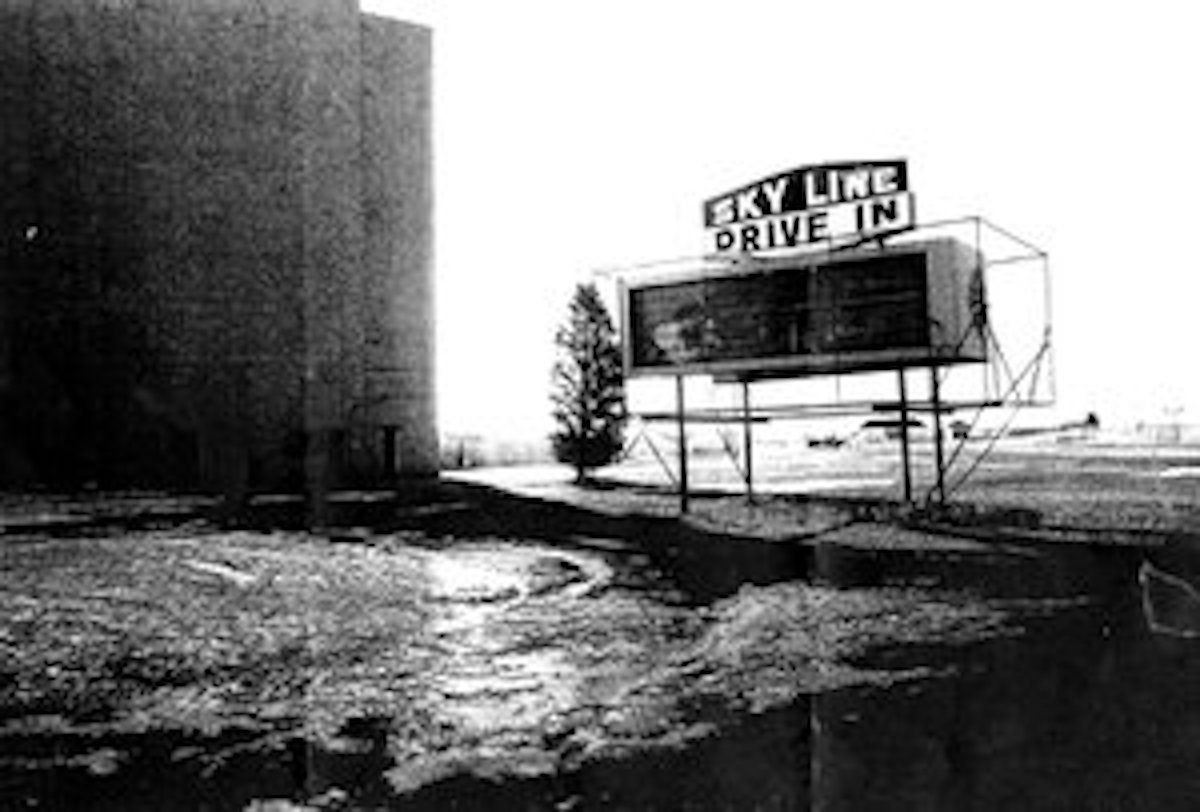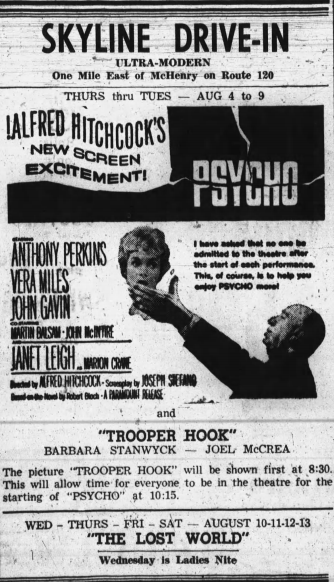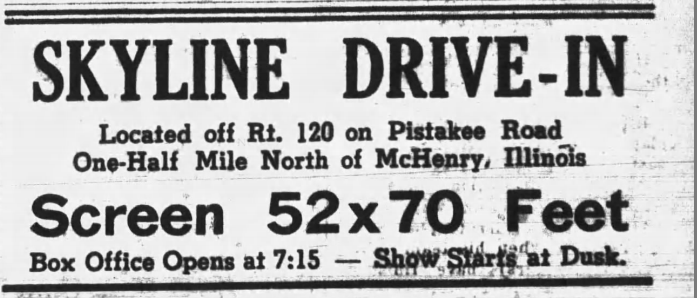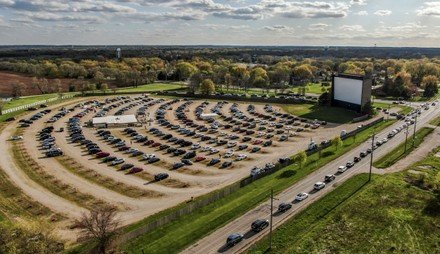Seeing Stars at the McHenry Drive-In
McHenry County is one of a few lucky places to still have a drive-in movie theater.
By Patrick King
My grandparents had a summer cottage in White Oaks Bay on Wonder Lake, and on weekends we’d drive up from Chicago to go boating and swimming. It was during the summer of ’57 that I experienced the most amazing, most colossal thing ever. It was late one Saturday afternoon when I was 7 years old. My brother Tom, who was 16 and old enough to drive, asked if I wanted to go for a ride. “A ride? You bet I would!” Nothing could be finer than riding shotgun, without your parents, in a three-tone 1956 Dodge Custom Royal Lancer on a Saturday evening.
I had no idea where we were going and couldn’t have cared less. We drove east, through McHenry, past the Dog N Suds, past the A&W Drive-In, and then I saw it, the glowing neon sign: Skyline Drive-In (now McHenry Outdoor Theater). It was there we turned left and it was then I realized, I was going to the coolest thing ever: The drive-in. We pulled in, bought our tickets and proceeded with headlights off. There was row after row of posts with glowing translucent lights and each held your very own personal speaker. It was dark, previews had begun and all was very quiet. I could hear the gravel crunching beneath our tires as we slowly searched for the perfect spot in what seemed like some spooky moonlit graveyard. Once parked with the speaker in the window and volume adjusted, we kicked off our shoes and got comfy. We were just in time as the projector flickered back to life, and there, right before my eyes, bigger than big, still bigger than even today’s mega theaters, the screen read: “American International Pictures presents: ‘The Amazing Colossal Man.’”
Scott M. Dehn, president of Golden Age Cinemas, which operates the McHenry Outdoor, has similar happy memories. “Some of my fondest memories as a child are of attending [the drive-in] with my parents, my sister and my grandmother. As a 6-year-old, I could hardly comprehend the concept of watching movies on such a huge screen outside under the stars.”
Roll the Credits
In 1933, a patent was awarded to Richard Hollingshead for the design of an outdoor automobile movie theater. The world’s first drive-in theater was opened in Camden, N.J., in 1933. While the professionals built hardtop indoor cinemas, it was amateurs who were building open-air cinemas. Early drive-in theaters usually consisted of an open field, a used projector, one loudspeaker, and one huge floppy canvas screen, which could grotesquely distort the images on a windy evening. Hollywood movie tycoons rejected the early drive-ins, calling them “ozone theaters” — a passing fad. By 1956, this phenomenon of the Motor Age, this alleged fad of more than 5,000 drive-in theaters was now bringing in one-fourth of Hollywood’s revenues.
What made the American drive-in unique was the lack of any drive-in protocol, so the sky was the limit for these new entrepreneurs. Some drive-ins offered a playground for the kids, others a driving-range for dad, still others went as far as offering a laundry service for mom, for a small fee.
Drive-ins were not only offering movies, but acrobats, pony rides and chicken dinners. Drive-ins out west even provided back row rails for tethering horses.
Going Attractions
There are fewer than 330 surviving drive-ins, according to the United Drive-In Theater Owners Association. Why are they fading?
Like any business, the movie industry’s goal is to turn a profit. The cost for Hollywood to send out a full-length movie using 35-millimeter film is about $1,500 per copy. The digital version is around $100. Going exclusively digital is profitable news for Hollywood, but costly news for movie theater owners. Digital conversion costs are especially high for drive-in theaters. Because of their size and distance to the screen, a drive-in requires a doubly expensive, $130,000 long-throw digital projector conversion. The writing is on the wall: Movies produced on film are rapidly decreasing. Businesses that used to make and support celluloid—labs, shippers, and suppliers—are shutting down or shifting gears. Like the transition from silent movies to “talkies,” you switch over, or you become extinct, too.
Show Goes on at the Outdoor
The McHenry Outdoor Theater is one of just a few American drive-ins that, through loyal voters, won Honda’s 2013 Project Drive-In contest, a charity to raise money to buy drive-in theaters digital projectors. “I find myself blessed to be in a position to help provide memories like those I experienced as a child to a whole new generation of families,” he said.
The McHenry Outdoor is one of only 16 masonry tower screens left in the United States. Today’s spectacular, larger-than-life movies are an absolute perfect match for the theater’s massive screen, and as Hollywood continues churning out action-packed superhero and animated family-friendly movies, they play directly into the drive-in’s goal to offer affordable family friendly entertainment. “I get to see the looks of awe and excitement on the children’s faces as they arrive at the theater to see their favorite cartoon character or superhero on the big screen,” Dehn said.
Where but at the drive-in can you see two first-run movies on a 100-foot-wide screen, bring your pet, play Frisbee or catch while a classic intermission short-film plays and, if you like, arrive in pajamas, all for one low price?
Just as I remember the outdoor theater, our kids, now parents themselves, have fond memories of going to the outdoor as a family. If you’ve never been to the McHenry Outdoor, I urge you to go, and take the kids or grandkids — it will be an enjoyable memory they will never forget.
Find upcoming showings at McHenry Outdoor Theater - Golden Age Cinemas.
Patrick Kings is a member of the McHenry County Historical Society’s Historic Sites Committee. MCHS invites people with architectural and/or historically significant buildings, homes, businesses, or farms, to apply for a plaque. Call 815-923-2267 or visit GotHistory.org.




